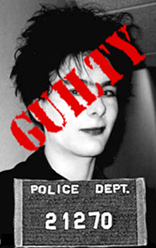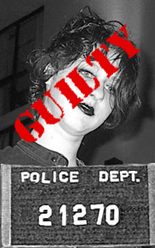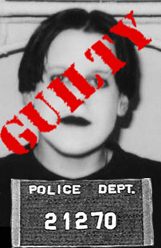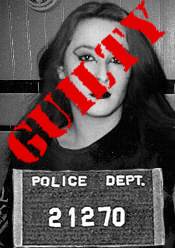


ContentLinks |
||
PastPoop7/7/2003-Post-modern Antisocialism: Cultural DiseaseYou`ve seen them in the mall, clad entirely in black, starkly contrasting their pale visage. A grotesque grimace leers from behind wiry black hair. Black eyeliner and lipstick are painted with broad, rough strokes. Black pants or fishnet stockings shroud their legs. Oversized black boots drum the tile floor as if in macabre cadence with the very throbbing of Hell.Goths. They saunter into the nearest HotTopic; blatant capitalist tendencies belie the fact that they are not as dissimilar as they purport to be. How did these dejected denizens of doom and darkness come to be? What possible sequence of events lead to this enigmatic conclusion? Who are goths?  A brief history: The term ``Goth`` has been subjected to many lexical iterations in the centuries since its inception. The expression, roughly meaning ``barbarian``, was coined by the Romans as a derogatory reference to a Germanic tribe of nomadic warriors. These early Goths roamed Europe for about 1200 years before settling the areas in and around current-day Spain, France, Italy, and Greece. After receding for approximately 500 years, the moniker resurfaced around the twelfth century AD. ``Gothic`` now contemptuously referred to a style of architecture prevalent throughout Europe and Scandinavia. Criticized as dark and without beauty, Gothic structures were considered architecturally barbaric. Despite this denigration, Gothic cathedrals, town halls, palaces, courthouses and bridges were constructed, becoming increasingly elaborate through the late Renaissance. The Gothic label then again descended into obscurity for several centuries until the late 1700`s. Now referring to a genre of literary works, the term enjoyed a revival. Gothic books of this time included themes of death and the supernatural. Heavily criticized, Gothic literature began to fade by the early 1800`s. The current usage of ``Goth`` was born of the late Punk music era in the late 1970`s and early 1980`s. Over the years, a dark and heavy style of music became synonymous with ``Goth``, depression, and the color black, leaving us with the term as it is known today.  The history of the term, while interesting, gives us some limited insight into the modern goth. Throughout the past, ``Goth`` has always been associated with barbarism. I believe this relation holds true even now. Goths of today are practicing social barbarism, to coin a term. They attack societal constructs on the premise of a perceived offense. The black clothing, make-up, white faces are an attempt to assert individuality. This individuality absent due to conforming with goth standards. ``Let`s be different just like everyone else.`` In the end, these anemic pariahs are merely trading one clique for another. Conformity via non-conformity, an irony lost on them.  The depression, apparently inherent with being goth, is entirely feigned. A grand bluff designed to keep others at a distance. To be sure, most goths may believe they are depressed, however, this hypochondriacal condition is nothing but an artifact of their desperate need to be a part of something.  Thus we have arrived at our inevitable conclusion, goths are nothing more than charlatans. Marvelous poseurs attempting to make their mark on society. Self-appointed societal barbarians. They are the cadaverous, angst-ridden persons we all know and love (to hate). -MongledMonkey |
||
Recent Content |
||

